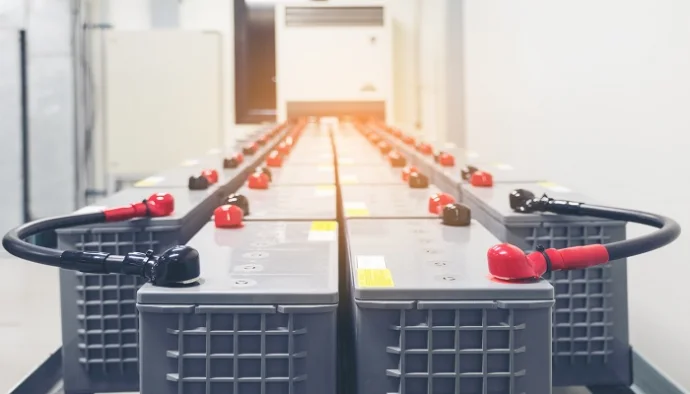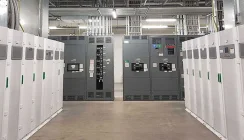How To Choose Between Single and Three Phase UPS Systems
Sometimes it is easy within a server room or data centre environment to take for granted the relative ease with which we can simply plug IT network servers and peripherals into a PDU outlet or UPS powered socket. These connections form the final element of what we term the ‘critical power’ path. They are the result of time spent planning the electrical circuits to ensure power availability whether there is a mains power supply failure or downstream overload or server fault condition.
The Server Room Environments team includes power protection specialists who work with NICEIC certified electrical contractors to ensure we deliver the right level of critical power planning. Our approach is a multi-staged process that covers load sizing and electrical supply discrimination right back to the building incomer, covering electrical LV switchboards and distribution panels to be protected. The approach helps in the sizing of electrical circuits, uninterruptible power supplies and standby power generators and whether to use single or three phase UPS systems within a centralised or decentralised power protection plan.
UPS System Phase Configurations
It can sometimes be a little confusing when deciding whether you should consider a single or three phase UPS system or generator. This can be because a three phase supply consists of three single phase supplies (and a neutral), which each supply at 120˚ phase orientation to the other (more information: three-wire and four-wire 3 phase supplies).
A three-phase electrical supply can deliver more electrical power than a single-phase supply. A useful analogy here is a three-person rowing team to a single person. The three-person team allows at least one paddle to be in the water at any time ensuring continuity of power and momentum.
Uninterruptible power supplies are typically available in one of three electrical configurations. These include 1/1, 3/1 and 3/3 configurations:
| Input | Output | Configuration | UK Mains Voltage | Typical UPS Sizes |
|---|---|---|---|---|
| 1 Phase | 1 Phase | 1/1 | 230/230Vac, 50Hz | 300VA to 20kVA |
| 3 Phase | 1 Phase | 3/1 | 400/230Vac, 50Hz | 5 to 20kVA |
| 3 Phase | 3 Phase | 3/3 | 400/400Vac, 50Hz | 10kVA to 1MVA |
What limits the size of a single-phase output UPS is Ohms Law. The cable sizes must increase in diameter to cover resistance loses and deliver the higher amperage. A 20kVA output is generally the largest single-phase UPS system available. This is due to the output amperage and cable requirements. 20kVA=20,000VA / 230Vac = 86.9Amps.
Single phase UPS are typically listed by their kVA/kW rating whereas three phase UPS are typically listed with their configuration i.e. 5kVA, 20kVA 3/1 or 250kVA 3/3.
Three Phase UPS Systems (3/3 and 3/1)
Larger buildings including data centres, industrial and commercial buildings will have a 3-phase electrical supply and building incomer. This is taken from a local sub-station distribution transfer within the National Grid.
A 3-phase 400Vac 50Hz electrical supply can provide more power than a single-phase supply and this may be required by certain circuits within the building. Examples can include a data centre, oil refinery or industrial manufacturing area. As the load demands reduce, the 3-phase supply may be split into single phase supplies to serve dedicated areas from sub-distribution panels. Typical areas requiring a 1-phase supply include offices, server rooms, comms rooms and network closets.
When we carry out an electrical survey, we identify all the electrical aspects of the building and identify and group the loads according to their requirements for a 3-phase or 1-phase supply, as well as grouping the loads into one of three loads: critical, essential and non-essential.
Critical loads include all the IT network circuits that will require uninterruptible power protection. Essential loads include support circuits that are still required during a mains power outage. These will require back-up power and could be supported by a standby power generator. Examples include lighting and security systems. Non-essential loads are those not required during a mains power failure and which are not critical to the overall operation of the building.
UPS systems can be termed ‘three-phase’ but it is important to identify if this is a 3-phase output or not. A 3/3 configuration indicates that the UPS system draws a three-phase input supply and provides a three-phase output. A 3/1 or 1/1 configuration indicates a single-phase output from either a three-phase input or single-phase input connection. UPS systems capable of 3/1 or 1/1 are typically configured during their electrical installation.
Three-phase UPS systems can be ideal for larger sites requiring a centralised power protection plan. The UPS system protects the critical load circuits to ensure that they are maintained during a mains power supply failure. A single 3-phase UPS whether installed in an N+X redundant configuration or not can provide an easier to maintain system than the alternative, which is a decentralised system, consisting of multiple and distributed single phase (output) UPS systems.
A typical three-phase UPS system range will start from 10kVA and be available in discrete sizes up to 1MVA or larger. Multiple systems can be installed in an N+X configuration where X = 1, 2 or 3 etc to provide additional resilience in the form of redundancy or a scaled operation.
Single Phase UPS Systems (1/1)
In the UK a single-phase electrical power socket will be rated to supply 230Vac 50Hz. Most IT hardware can be connected using a BS-style 1363 square-pin plug or IEC320 plug and lead. Examples within a server room include servers, switches, routers, hubs, PoE switches, IP phones and peripherals.
A 1/1 configured UPS system provides a single-phase output from a single-phase input. Single phase UPS systems range from under 400VA to 3kVA. Up to 2kVA the UPS will typically use a BS1363 plug connection to a local wall socket or an IEC320 cable. At 3kVA the plug will be a 16A blue commando style. Above 4kVA the UPS is typically hardwired to fused spur to comply with local electrical regulations due to the power draw.
As discussed, some three phase UPS can be installed to provide a single-phase output. These UPS will have a 3/1 or 1/1 configuration and the largest generally available is a 20kVA 3/1 or 1/1 system. This type of UPS will be hardwired and will include an internal maintenance bypass switch. It may also be installed with an external maintenance bypass switch for ease of removal without disruption to the connected loads.
UPS System Sizing
Sizing uninterruptible power supplies is a relatively easy process. It is important to match the load requirements and mains power supply (or generator supplies available) to an appropriately configured UPS system. It is also important to balance the loading on a three phase UPS system to prevent any one phase within the 3-phases being overloaded (phase imbalance) as this can lead to conductor overheating and potential failure. If we consider a 120kVA three phase UPS, each of the phases should be balanced up to a maximum of 40kVA per phase.
Care should be taken to understand what is required when a specification or tender calls for a 60kVA three phase UPS. This could be a three phase UPS with a 60kVA total output or a 60kVA per phase UPS meaning that the total load is 3×60kVA = 180kVA three phase UPS.
The team at Server Room Environments have years of experience sizing and installing single and three phase UPS systems including monoblock and modular solutions. Simply contact us for a free site survey or project review.


























